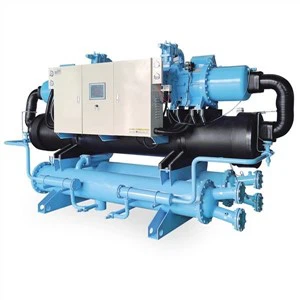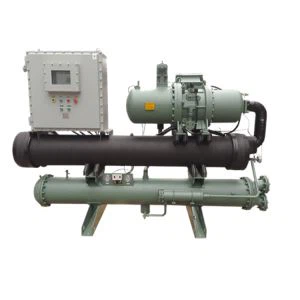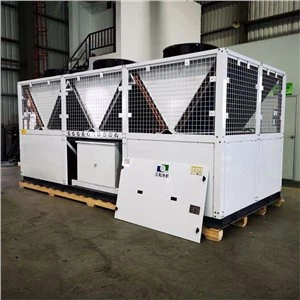Hey there! As a supplier of packaged water chillers, I've seen firsthand the importance of getting the outdoor installation right. It's not just about plopping the unit outside and calling it a day. There are several key considerations that can make or break the performance and longevity of your chiller. So, let's dive into what you need to know when installing a packaged water chiller outdoors.
Location, Location, Location
The first thing you gotta think about is where you're gonna put that chiller. You want to find a spot that's level and stable. Uneven ground can cause all sorts of problems, like vibration and misalignment, which can lead to premature wear and tear on the unit. A concrete pad is usually the best option, as it provides a solid foundation. Make sure it's big enough to accommodate the chiller with some extra space around it for maintenance and airflow.
You also need to consider the proximity to other equipment and structures. Keep the chiller away from heat sources like exhaust vents and boilers. Heat from these sources can reduce the efficiency of the chiller and cause it to work harder than it needs to. On the flip side, don't install it too close to walls or fences, as this can restrict the airflow around the unit. Proper airflow is crucial for the chiller to operate effectively, so make sure there's at least a few feet of clearance on all sides.
Weather Protection
Outdoor conditions can be harsh, so you need to protect your chiller from the elements. Rain, snow, and extreme temperatures can all take a toll on the unit. A good quality weatherproof enclosure can go a long way in shielding the chiller from the weather. It should be made of durable materials that can withstand the elements and provide adequate ventilation to prevent overheating.
In areas with heavy snowfall, you might need to install a snow shield or a sloped roof over the chiller to prevent snow buildup. Snow can block the airflow and cause the unit to malfunction. You also want to make sure the enclosure is designed to prevent water from pooling around the chiller, as this can lead to corrosion and electrical problems.
Noise Considerations
Let's face it, chillers can be noisy. If you're installing the unit near residential areas or offices, you need to take steps to minimize the noise. One option is to choose a chiller with a low noise rating. Many manufacturers offer models that are designed to operate quietly. You can also install noise-reducing barriers around the chiller to absorb and deflect the sound. These barriers can be made of materials like acoustic foam or fiberglass.


Another thing to consider is the location of the chiller in relation to the building. Try to place it as far away from the occupied areas as possible. You can also use the natural topography of the land to your advantage. For example, if there's a hill or a berm nearby, you can position the chiller behind it to block the noise.
Electrical and Plumbing Connections
Proper electrical and plumbing connections are essential for the safe and efficient operation of the chiller. You need to make sure the electrical supply is adequate and that the wiring is installed correctly. It's always a good idea to have a licensed electrician handle the electrical work. They can ensure that the chiller is properly grounded and that the circuit breakers are sized correctly.
When it comes to plumbing, you need to connect the chiller to the water source and the cooling system. Make sure the pipes are the right size and that they're properly insulated to prevent heat loss. You also want to install shut-off valves and strainers to make it easier to maintain and service the system.
Maintenance Access
Regular maintenance is key to keeping your chiller running smoothly. You need to have easy access to all the components of the unit for inspection, cleaning, and repairs. Make sure there's enough space around the chiller to allow for easy movement and access to the service panels. You should also consider installing a platform or a ladder if the chiller is installed at a height.
It's a good idea to create a maintenance schedule and stick to it. This can help you catch any potential problems early on and prevent costly breakdowns. Some of the maintenance tasks you'll need to perform include cleaning the condenser coils, checking the refrigerant levels, and lubricating the moving parts.
Environmental Impact
As a responsible supplier, I always encourage my customers to consider the environmental impact of their chiller installation. Look for a chiller that uses environmentally friendly refrigerants. Many newer models are designed to use refrigerants with a lower global warming potential (GWP). This can help reduce your carbon footprint and contribute to a more sustainable future.
You can also take steps to improve the energy efficiency of the chiller. This can not only save you money on your energy bills but also reduce the demand for electricity. Some ways to improve energy efficiency include using variable speed drives, optimizing the control settings, and performing regular maintenance.
Conclusion
Installing a packaged water chiller outdoors requires careful planning and consideration. By taking the time to address these key factors, you can ensure that your chiller operates efficiently, reliably, and safely for years to come. If you're in the market for a packaged water chiller or need help with the installation, don't hesitate to reach out. We're here to help you every step of the way. Whether you're looking for a Computer Room Precision Air Conditioner or a standard packaged water chiller, we've got you covered. Contact us today to discuss your specific needs and get a quote.
References
- ASHRAE Handbook - HVAC Systems and Equipment
- Manufacturer's installation and operation manuals
- Local building codes and regulations






